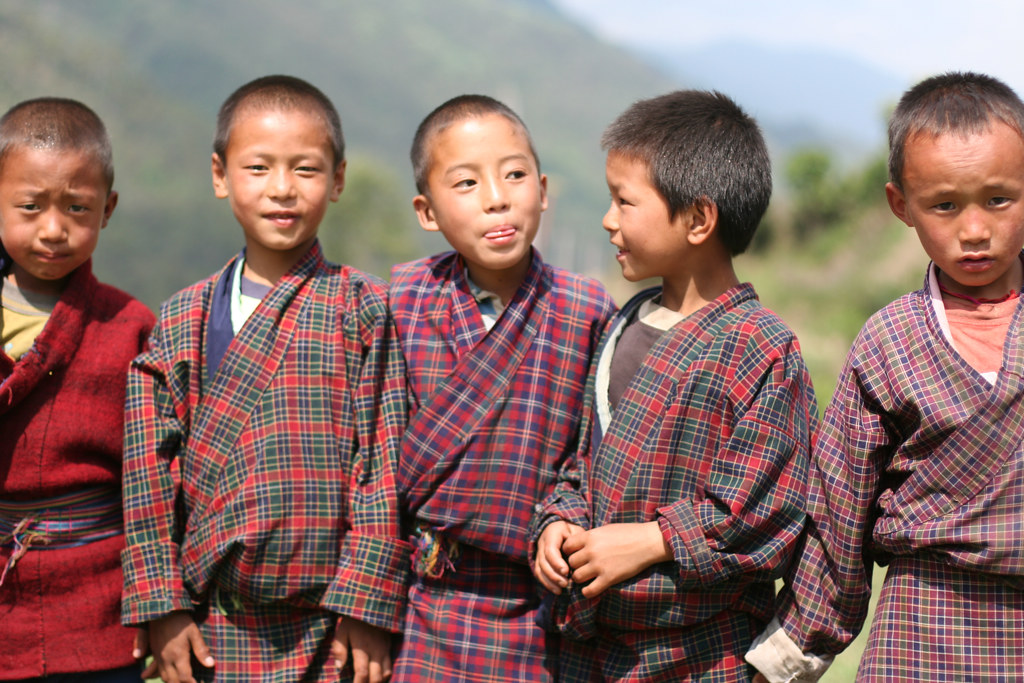The Fight Against Poverty in Bhutan

According to World Bank data, the Kingdom of Bhutan finally eliminated extreme poverty in 2022. This data means that 100% of Bhutanese live with more than $2.15/a day. Furthermore, the share of the population living under the upper-middle income countries’ poverty line of 6.85 has shrunk from 39.5% in 2017 to 8.5% in 2022. However, despite these reductions, the Bhutanese people still face many challenges.
Bhutan is a country in the Himalayas mountain range with an area of 38.394 sq km. This size makes it a fairly small nation in one of the most remote locations in the world, creating challenges for development and poverty reduction. Former prime minister Jigme Thinley said, “There are too many Bhutanese for whom a walk or a drive to the nearest basic health unit is at least one hour away.” Therefore, while its journey provides insights for development, the country still has much to improve, including living conditions and the eradication of poverty.
Eliminating Poverty in Bhutan
The main driver of Bhutanese economic growth in the past decades has been exporting excess hydroelectric power to India. From 1990 to 2022, this export has been the main source of income and reduction of poverty in Bhutan. With this income, the Bhutanese government has reinvested in developing infrastructure throughout the country. With this, Bhutanese farmers have commercialized their products beyond their local communities, boosting trade and increasing their income.
Priorities for Bhutan remain tied to boosting infrastructure to make it attractive for business and improving its Gross Happiness Index score, a development measurement tool designed in Bhutan to address the main complaints of its inhabitants and guide policy to improve the mental well-being of its population. This index has also experienced improvement but on a more reduced scale when compared to overall poverty reduction. On a scale of 0 to one, the country scored 0.743 in 2010, improving to 0.781 in 2022. This growth might be slower than poverty reduction or GDP, but it is steady and allows the Bhutanese government to take a more holistic approach to improving living conditions.
Challenges
Despite the successes in poverty reduction, as the former prime minister Jigme Thinley expressed, there are still many challenges to overcome. Youth unemployment rose from 9.6% in 2021 to 18.6% in 2022, and debt to GDP stood at 129.1%. This trend has led the government to a tight situation where its youth is jobless and cannot afford to increase its investments to counterbalance it.
Furthermore, despite its progress in this area, remote mountainous areas still have long commutes before arriving at health facilities, causing disparities between urban and rural areas, especially in the country’s eastern regions.
Finally, Bhutan’s location poses one last challenge to development: natural disasters. Earthquakes, floods and landslides are common in the area and can cause significant damage to the local population. Thus, in 2019, the government of Bhutan, in collaboration with the UN, developed a roadmap for disaster risk management. The current guidelines focus on awareness, preparedness and coordinated efficiency to maximize the impact of aid from NGOs and UN organizations.
Looking Forward
Bhutan has made significant progress in improving living conditions, and its policies center around the population’s most urgent needs thanks to the use of the Gross Happiness Index. Thus, even if the government has little maneuverability due to high debt ratios, it has tackled the issue of development in remote terrain relatively effectively through extensive investments in infrastructure. It may be too soon to declare the end of all poverty in Bhutan, but the country has come a long way to achieve 0% of its population living under $2.15/a day.
– Daniel Pereda
Photo: Flickr
